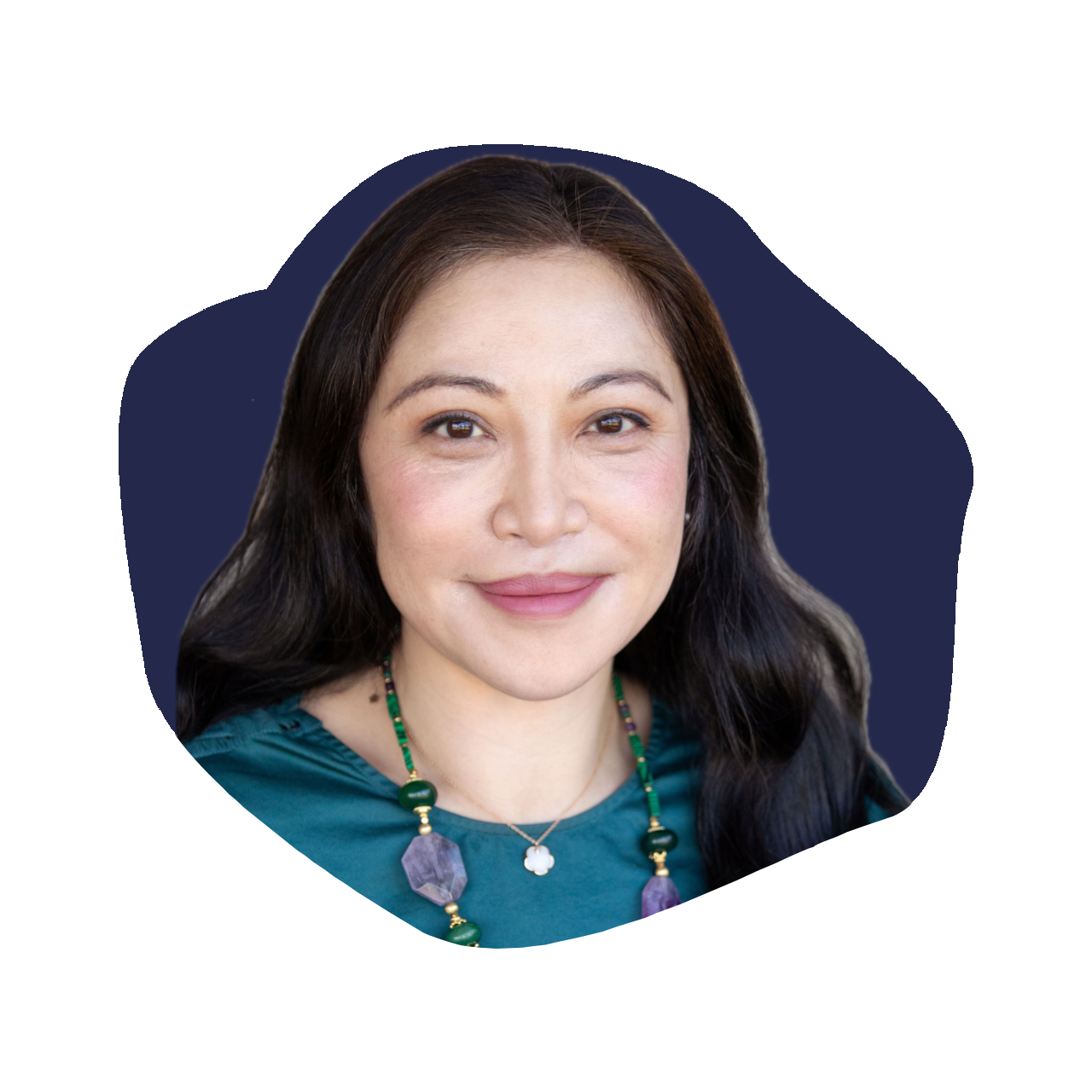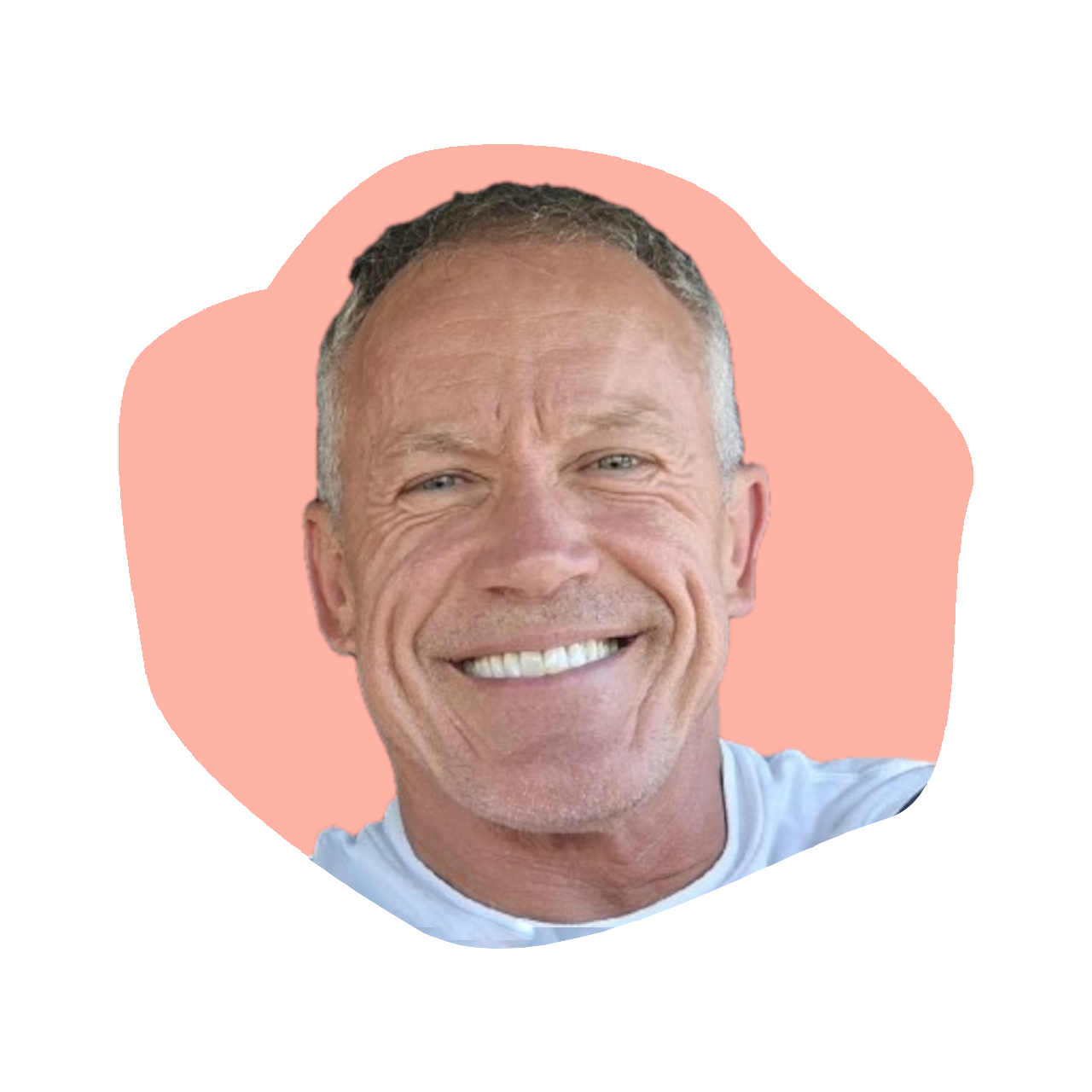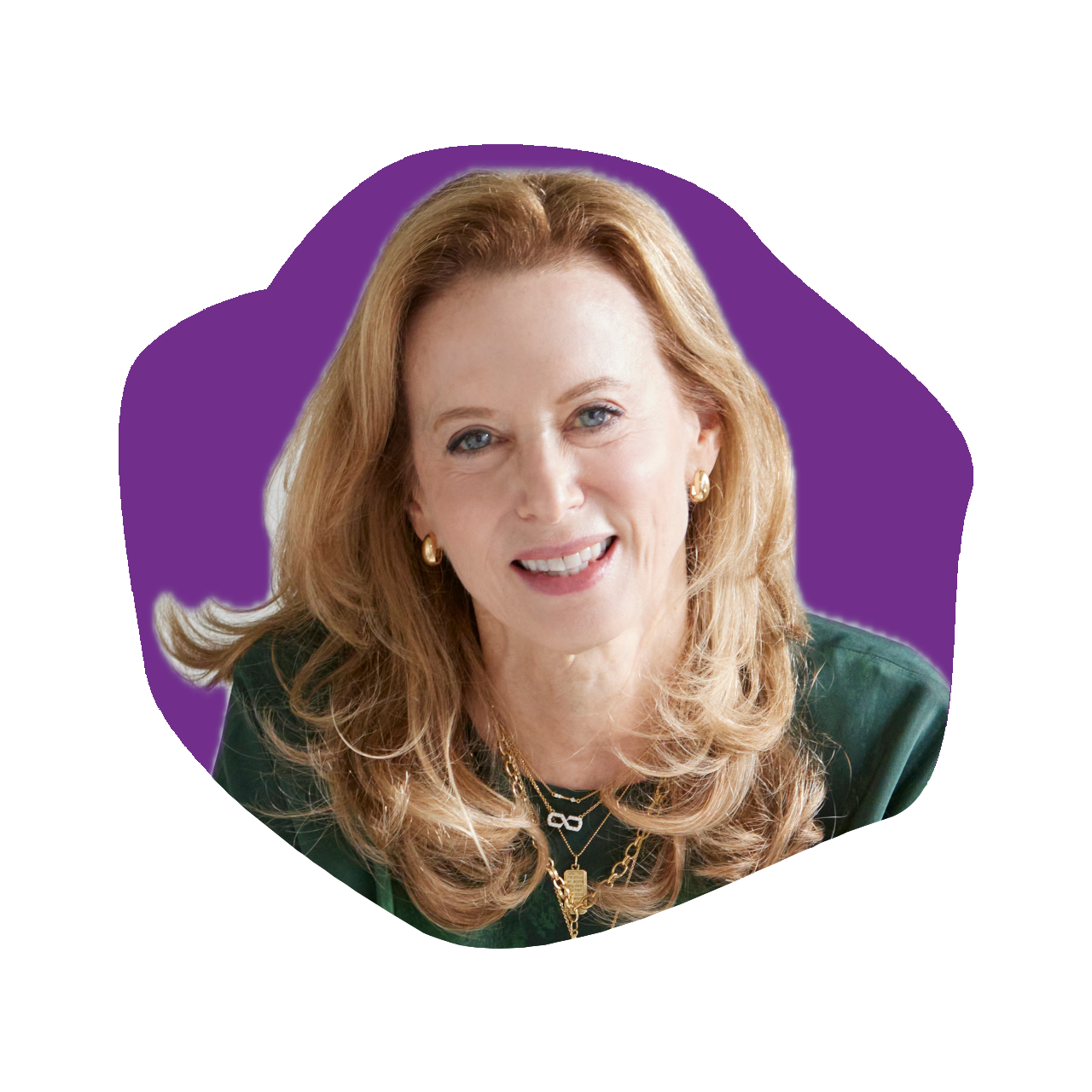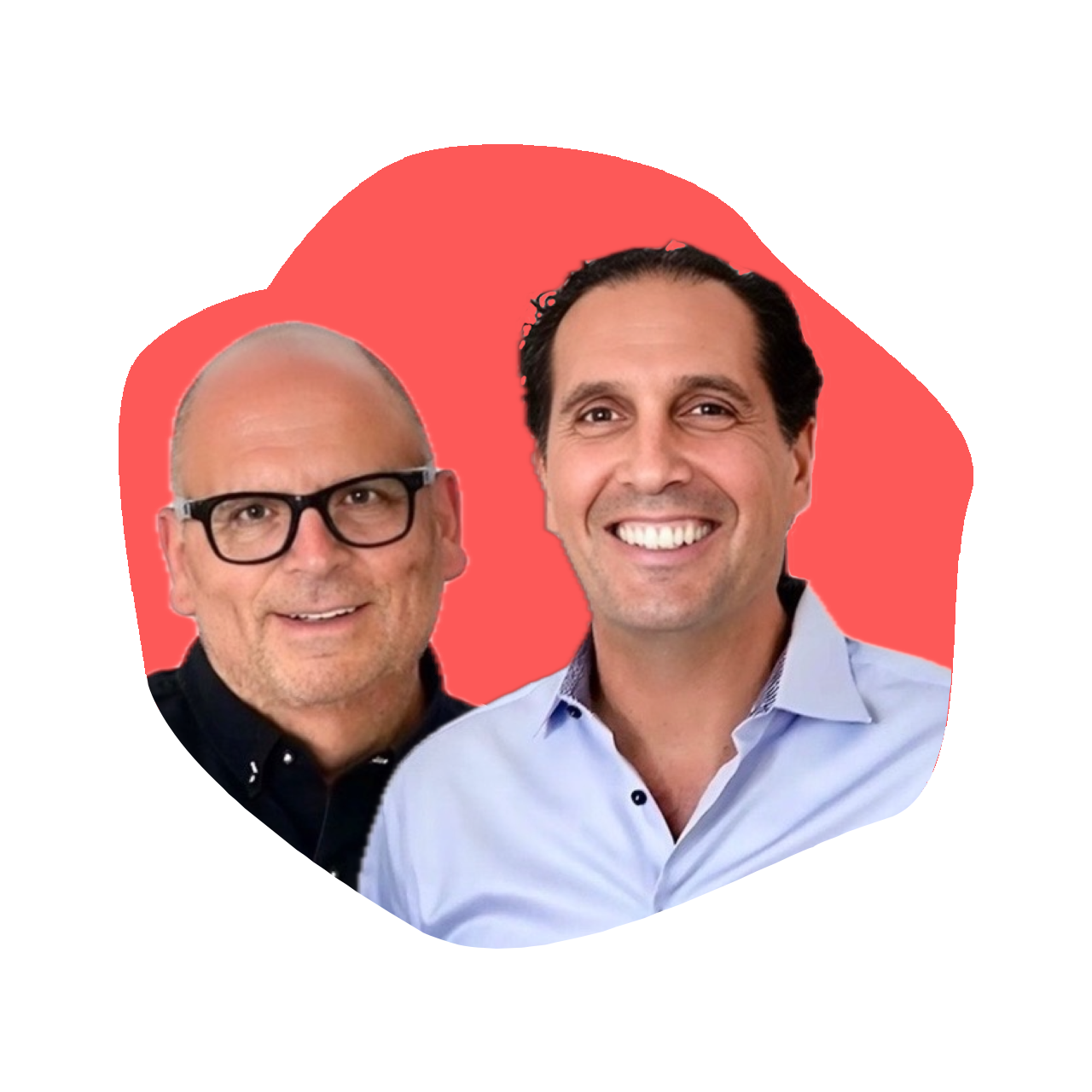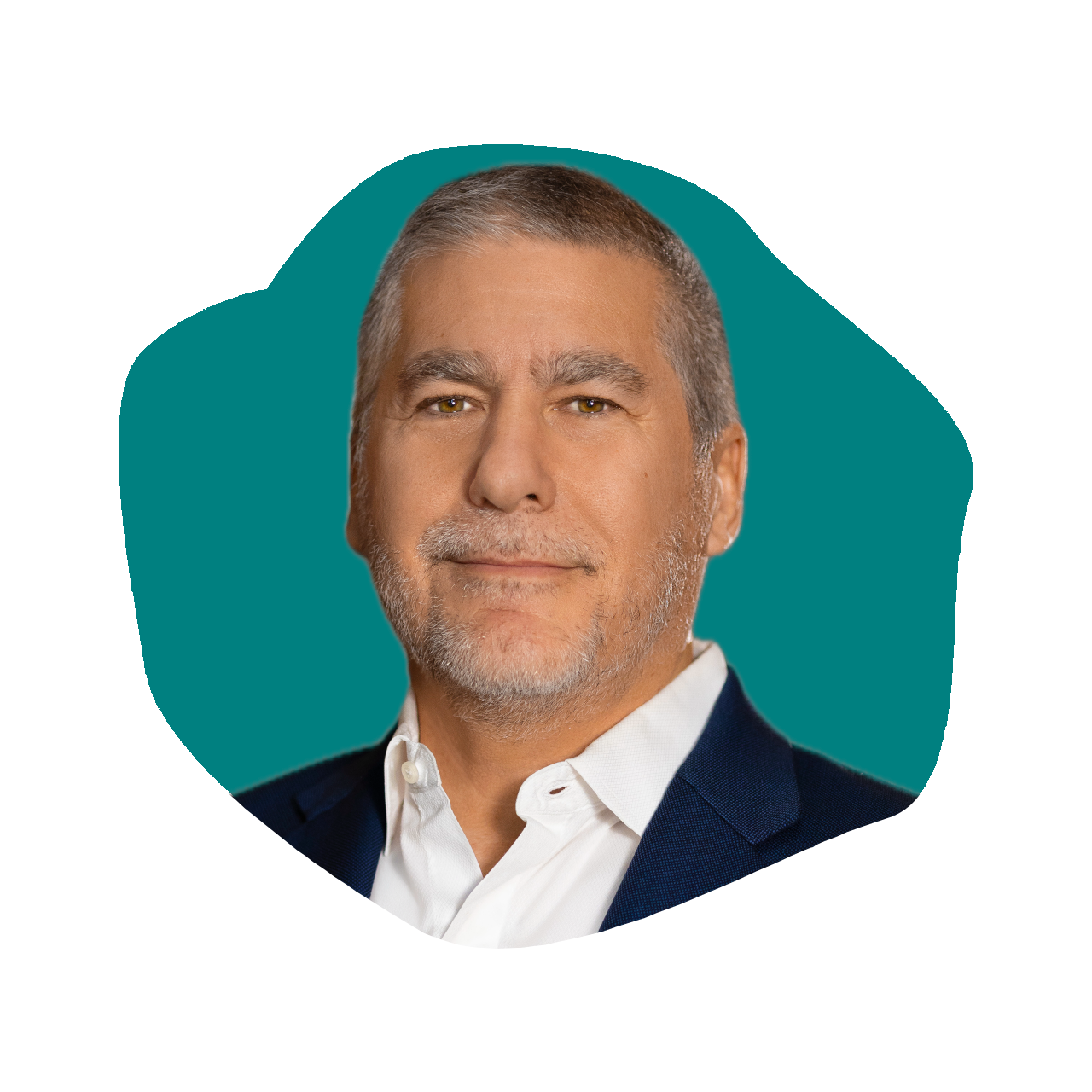Rebecca Minkoff – How She Turned Her Passion Into a Global Fashion Brand
Episode 48
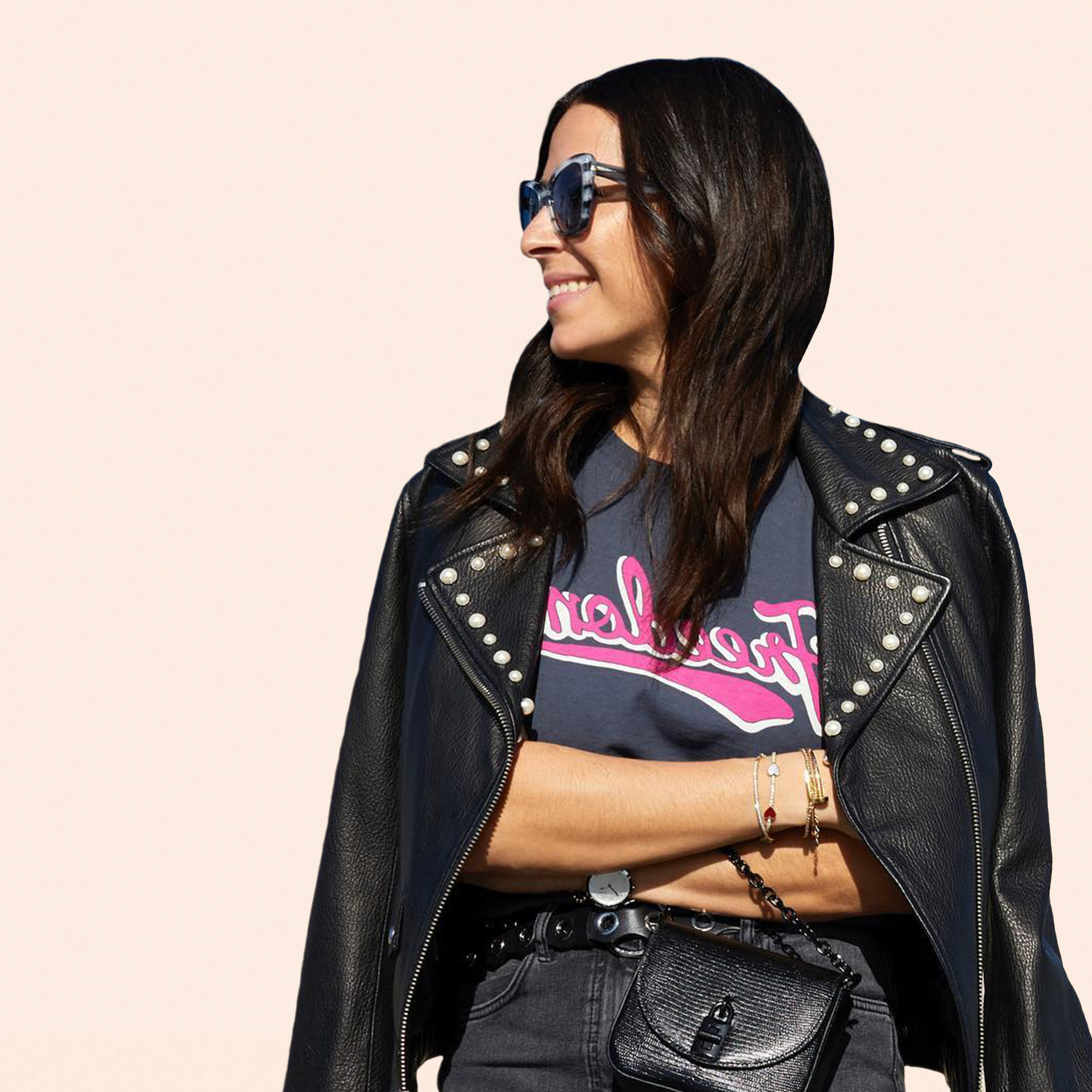
Resources from
this episode:
Enjoying this episode of #TheKaraGoldinShow? Let Kara know by clicking on the links below and sending her a quick shout-out on social!
Follow Kara on LinkedIn – Instagram – X – Facebook – TikTok – YouTube – Threads
Have a question for Kara about one of our episodes? Reach out to Kara directly at [email protected]
Transcript
Kara Goldin: Hi everybody, it’s Kara Goldin with Unstoppable. I’m so, so excited to have Rebecca Minkoff here. Say hi, Rebecca.
Rebecca Minkoff: Yay, hello.
Kara Goldin: So we’re just coming off of Fashion Week, and actually we worked with Rebecca on Fashion Week, and she gave us a very, very cool spot inside of her beautiful, beautiful fashions. So we not only kept people hydrated, but also our logo was very artistically integrated into the whole thing, so thank you for that. It was really, it was super, super fun, so very excited.
So just a little bit of background on Rebecca in case you guys don’t know who she is, you’ve been hiding under a rock somewhere. Rebecca Minkoff is a designer, a friend as well, and just a cool individual overall. Rebecca moved to New York City when she was only 18 years old. Wow, that’s a story in and of itself. Probably most people know Rebecca for her version of the I love New York tee shirts that were 2001, is that right around?
Rebecca Minkoff: Yeah.
Kara Goldin: That’s awesome. Then that continued on into a collection of handbag and lots of other great stuff. I’ll let you tell more of that story, but over the years we were just talking about this is her 20th Fashion Week?
Rebecca Minkoff: I think so. I’d have to really make sure I’m counting right. But twice a year for 10 years is, yeah.
Kara Goldin: That’s awesome. So, so very, very cool. How many stores now?
Rebecca Minkoff: Two.
Kara Goldin: Two stores?
Rebecca Minkoff: Yeah.
Kara Goldin: And just your just design-
Rebecca Minkoff: In the `U. S. two stores. We have outside of the U.S, we have about six more.
Kara Goldin: Very, very cool. So, so welcome.
Rebecca Minkoff: Thanks. I’m glad to be here.
Kara Goldin: Yeah, thanks. So tell us a little bit about, so you got here when you were 18. I mean, what was sort of the thinking? Did you know you were going to get into fashion when you moved here, and where’d you come from?
Rebecca Minkoff: So by way of San Diego, we moved to Florida when I was eight, and it was devastating to me. So we lived in Florida. At 18, I was like, “I’ve got to get the hell out of Dodge. There’s nothing for me here.” I had had this fascination with moving to New York, becoming a designer. I had fallen in love with sewing as early as eight sewing my own clothing, making my bat mitzvah dress, my prom dress, all the costume department dresses in my performing arts high school. So it was definitely an area that I was well versed in and had a passion for. I was able to secure an internship with a designer and it was minimum wage was the pay.
And so with nowhere to live in two suitcases, I said to my parents, “I’m moving.” I think I finally distilled down the emotion because people are like, “Weren’t you scared?” I equated to that feeling when you know you’re dating the wrong guy and everyone’s telling you don’t date him but nothing’s going to stop you from being with him. That was my feeling for like I have to get to New York, so nothing was going to stop me. So I came here and lived on my friend’s couch.
Kara Goldin: Who was the first, what was that first job?
Rebecca Minkoff: His name was Craig Taylor. He does not have a company anymore. But at the time, he had a really great business making very luxurious men shirts for women.
Kara Goldin: Oh, interesting. Very, very interesting. So you get this job, where were you living?
Rebecca Minkoff: I was living in Florida. I got the internship over the summer, had my last summer of I guess innocence. Then in late September 1999, I moved up here.
Kara Goldin: What was your best story first couple of weeks of living in New York?
Rebecca Minkoff: Well, I froze my ass off because we went winter shopping for me in Florida and nothing is the weight that it needs to be.
Kara Goldin: Totally.
Rebecca Minkoff: So I was like dying when I got here. I hadn’t experienced cold like that before. My mom was like, “Okay, I’ll take you to Century 21,” but no coats over $100. I don’t know if you know this, but like coats under $100 don’t also keep you that warm. I mean at the time, now you have many more options, but the unique clothes in those areas didn’t exist then.
Kara Goldin: So where were you living?
Rebecca Minkoff: I stayed for the first two weeks with my friend at Fordham University. He would sneak me into his dorm room every night. Then I was like, “All right, I’ve made it two weeks. My parents are definitely going to get me an apartment.” They were like, “No, we’ve negotiated with your cousin. You can live in her daughter’s play room if you babysit twice a week.” That was my first nine months here.
Kara Goldin: That’s crazy.
Rebecca Minkoff: Yeah.
Kara Goldin: And then, and so the design of the I Love New York tee shirts, how does that come about?
Rebecca Minkoff: That came about because I had been in the Caribbean as part of this artist summit and I loved how the tee shirts were cut up and trends were different then. But I loved the beads and that it was all kind of DIY. I came home and I was like, “I don’t want a tourist. I don’t want it to say Aruba. I want it to say New York.” So I made one, I wore it. My sister-in-law saw it and wanted it. She was at dinner with a family friend, Jenna Elfman, who was an actress and Jenna wanted it. So I was so thrilled the celebrity wanted my shirt.
I made it, sent it to her on September 9th, I’ll never forget that day, 2001. She wore it on Jay Leno on September 13th. He asked her about the shirt, and she had worn it in response to obviously what it just happened, and you could have never predicted that happening. And the inbound then again going back in time, you remember press was very meaningful then. If something was in a magazine, people had to have it. So I was flooded with orders and decided to give the proceeds to the Red Cross. Then I was flooded with more orders and that’s all I did for nine months.
Kara Goldin: That’s crazy. How did you keep up with that? I mean, you had to fund it, you had to, right?
Rebecca Minkoff: I had to fund it and I didn’t have much money at all. That was three years into my job with the designer, and they had also decided to let me go at that time. It was a kind firing. The CEO is like, “You know what you’re doing, go do it.” And I was like, “Do I know what I’m doing now? I don’t know that I do, but okay.”
I was fortunate enough to meet a woman who had a website that did e-commerce and that was the early days of e-commerce. She loved the shirts and so she ordered a bunch. I said, “I don’t even have enough money to go buy the goods down right here on the corner of Mercer and Canal.” That was my place.
Kara Goldin: It’s so crazy.
Rebecca Minkoff: “Can you prepay me?” And she’s like, “Sure, I’ll prepay you.” So she would prepay me for an order of shirts. I then had the money to go purchase them and then she would pay me the balance.
Kara Goldin: That’s crazy. Then beyond the shirt, you branched out into a bag. How did that come about?
Rebecca Minkoff: The shirt and the clothing line that I had had, that no one really cared about, lasted for about four years of just doing apparel. It was fine. It was an okay business. But there was, it just felt like it was just me always pushing. I lacked the momentum of like, “There’s something here that people want in a way that I can make a living.”
The bag came about four years later in 2005 when again, Jenna, I was at dinner with her and she said, “Do you make bags?” And I lied to her and I said, “Yep, I do.” She said, “I need one in two weeks. It’s for a film, the bags an important part of the character.” I said, “Great.”
Kara Goldin: I love this.
Rebecca Minkoff: So I went back to my vendors that I already knew from buying fabric and leather and I said, “Where do I make a bag in New York City?” They gave me a bunch of addresses. I hit them all up, found a vendor, sketched my design and said, “Can you make this? And I need it in two weeks.” Two samples were made, one for me, one for her. I kept one, to get into magazines and stuff once the film came out. Then FedEx didn’t deliver it on time, and they started filming without it, and it didn’t get it, and I was devastated.
I was like, “This is the last $800 I had,” and I didn’t even really have $800. I put the money on like a credit card advance. My credit card limit was $500 at the time, so they let me get it to 800. I just said, “Well, I just bought myself my first designer bag and I’ll just carry it around the city.” I got stopped enough times that I was like, “Wow, people are loving my bag.” That’s when I thought, “There might be something here.”
So I showed it to a friend, this is kind of a long story. I showed to a friend who was a buyer for a store in LA called Satine. She said, “I’m going to buy it for the store and then I’m going to get Daily Candy to write about it.”
Kara Goldin: I remember Daily Candy.
Rebecca Minkoff: God bless Daily Candy. At the time, again in the dark ages, Daily Candy was one email a day that had the power to transform brands, and in a way that I don’t know exists today. The writer wrote about it, it sold out, and that was the beginning of what’s now the brand.
Kara Goldin: That’s amazing.
Rebecca Minkoff: Yeah.
Kara Goldin: So you really used press, right? Not used them, that’s the wrong term. But I mean, you really like in addition, I always tell people like, “It’s not just about having a great product. You also have to get the word out.” I think you’ve done a terrific job. I mean, just talking about the Daily Candy. I think that that’s really critical that just in any business, in any category, I think that it’s really, really important. Just because you have a great product today, I always talk about it. I’m in the food industry and I always give people tickets to Expo West is the big food show in Anaheim. People come in who haven’t been to a food show and they’re like, “Oh my God, there’s like all these food things here.” What’s crazy is only 10% of them actually ever make it to the shelf.
Rebecca Minkoff: Wow.
Kara Goldin: Like it’s crazy. It’s that, and I’m sure in the fashion industry it’s the same thing. It’s so competitive, but I think it’s how do you get the word out? Like how do you connect with people? Like some people use influencers, some people don’t use influencers, but I think it’s so critical. You’ve just been like really great at cultivating those relationships too, which is kudos to you.
Rebecca Minkoff: Thanks. I think it’s about obviously word and new day and age and stuff is shifting even faster than ever. There’s always a version of that. If it’s on a magazine today, if it’s on an influencer, is it, I’m scared to say Tik Tok, but what are those outlets?
Kara Goldin: The right podcast.
Rebecca Minkoff: Yeah, exactly. But what are those outlets where your customer is, and then how do you create it? Some people are not good at it, but I’m not good at sales. I can’t read an Excel spreadsheet with numbers very well. But like I can do press and design.
Kara Goldin: Yeah, no, I think it’s super great. So you brought your brother and/or your brother joined you, however you want to say that. Like how did that all come about?
Rebecca Minkoff: That all came about because when Satine sold out of the order, and I didn’t have any money to produce the next run. Because they had ordered 12, and they came back with an order for 75 after it sold out. I didn’t have any money at all. So I called my dad and I was like, “Okay, I promise this won’t be a waste of money for you. Will you please loan me whatever, 2-3000 bucks?” he was like, “No, we’re good here, but call your brother. He might loan you the money.” My brother had a software company, he had totally his own independent life.
Kara Goldin: Is he older?
Rebecca Minkoff: He’s older, yeah, five years. He asked me a ton of questions. He’s like, “I’ll loan you the initial advance.” Then when those bags sold out and more stores started calling, he could see as a businessman, like the heat behind the brand and the heat that was coming. So instead of just loaning money, he started advising on business stuff, and it was like business one-on-one. Like, “Do you have a tax ID? Do you have two separate bank accounts? Okay good, now we have to get just basic stuff set up.”
Then he was like, “I’ll fly in once a month,” and then it became once a week. I’ll just never forget. We had this threshold and I was like, “When we hit X in sales, you have to move here because I can’t do this. I know where I’m good and I know where I’m bad, and stuff’s starting to crumble in the areas I’m not good at.” We hit that milestone eight years ago and he moved his whole family up.
Kara Goldin: Oh wow.
Rebecca Minkoff: Yeah, because he had been commuting from Florida and he’s like, “I don’t know my three year old, I’d like to know my kid.”
Kara Goldin: That’s awesome.
Rebecca Minkoff: Yeah.
Kara Goldin: So do you think, you talk about… I think this an entrepreneurial, like very, very key thing that you said, you probably don’t even realize that you said, but the fact that you actually knew that you weren’t good at certain things. I think that is such a key thing. Really knowing what you’re good at and what you’re not good at and bringing those resources in. I think the more trusted they are with that relationship with your brother, all the better. But what do you think you… Do you see that as well? People like they put this bravado on like, “Oh, I’m great at everything.” They won’t own the things that they’re not really that great at.
Rebecca Minkoff: Yeah, I don’t know why, because it’s so much easier to raise your hand and be like, “I don’t know this and I’m not good at it. Who’s better at it than me?” Because A, it’s exhausting to pretend, but I think you’re just much stronger when you surround yourself with strength. I think my always my even in hiring, it’s like, “What do I not do well?” Then that’s… One of my first hires was a girl who had sewn and sketched her whole Life, and she could do that, and wanted to do that full time. So the minute she started, I put my pencil down and I was like, “All right, you’re going to sketch my ideas now.” Would I like to be the designer in the back, like sketching each one like Karl Lagerfeld?
Kara Goldin: Sure.
Rebecca Minkoff: Totally, but I’m much better doing some other things, offloading my ideas. So, I don’t know. I was always just like, “Who cares if you’re not good at something? We can’t all be perfect.”
Kara Goldin: No, that’s awesome. Now you’re just, I mean, you’re running this huge global brand. The other thing that you did that I saw at Fashion Week is that you’ve launched a kid’s collection, like I wish it would’ve been around when my kids were that age. Because I always said the clothes were so lacking. You’ve got three kids of your own, so do you think that really inspired you to obviously to?
Rebecca Minkoff: Yeah.
Kara Goldin: So talk a little bit about that.
Rebecca Minkoff: We had been talking about kids for a long time. I think right now anything we launch, we want to be strategic. We were lucky enough to meet a partner, their company is called Resonance, and they are a technology company that makes apparel. We were able to tap into their technology, which the minute… When you buy a dress off the rack, there’s probably inventory, there’s all the unused sample yardage that then you see at Mood Fabrics and Project Runway some of these designers buying.
How they’ve shifted this is everything is in white and it’s all cotton, silk, wool. The minute they get an order, they print whatever the pattern is on the fabric with earth-friendly chemicals and then they cut it. So not only does it reduce waste in inventory and fabric overages, but it also, they optimize the pattern which you can’t do on pre-printed fabric. So there’s very little fabric waste at the end. All the little cutouts and scraps are biodegradable, and there’s less of them, and then you get your order.
It was a way to launch kids without increasing a wasteful footprint. I thought if you are going to launch kids and there’s all this talk about the planet that they’re inheriting, why not make sure that it’s a healthy launch, and something that is fun and playful and speaks to the brand, but also I don’t have to lose sleep over, like I’m just adding more crap to the planet.
Kara Goldin: Yeah, no, definitely. How did the show go for you?
Rebecca Minkoff: It was great. I know now what I’m going to experience and I just have to be like, “This is going to be like a really intense two hours.”
Kara Goldin: Yeah. It’s like a wedding, right?
Rebecca Minkoff: Like a wedding, you’re like, “I hope everyone else had a good time,” because I worked my ass off and I was only half present.
Kara Goldin: Yeah, and you’re the one that everybody wants to talk to you.
Rebecca Minkoff: The monkey in the cage.
Kara Goldin: Yeah, exactly, and it’s probably a little bit overwhelming.
Rebecca Minkoff: I had about 30 seconds right before we started, where I just looked at everything and I was like, “Take it in because this is all you’re getting,” but it was great.
Kara Goldin: That’s, awesome. Well it was absolutely beautiful and so exciting.
Rebecca Minkoff: Oh, thanks.
Kara Goldin: I think I told you, I brought my aunt and her sister. They’re New Yorkers through and through, and born and raised here. I was talking to one of them and I said, “Oh, what are you doing this weekend?” And I told her that I was going to your show. She said, “you know, I’ve never been to fashion week.” I said, “Look, you are coming with me.” So this was her first one and she’s in her 70s. She was like, “Oh my God, it was so much fun. Now I can tell all my friends that I’ve gone to Fashion Week.”
Rebecca Minkoff: Yeah, take it off her bucket list.
Kara Goldin: Yeah, exactly. It was super, super fun. So Female Founder Collective, talk to me a little bit about that.
Rebecca Minkoff: I launched that in the end of 2018 out of a frustration of the wage conversation, that we all have to keep having, women making 80 cents on the dollar, women of color, 50 to 60 cents on the dollar. Also, trying to figure out a way, like as a mother, I turn over all my products to see what’s inside of them and that determines my purchasing decision. So could we create a way for the consumer to also just know who’s a female founded company and who’s not?
Kara Goldin: I love it.
Rebecca Minkoff: And networking, for me, the right network for me has always been very powerful. I’m sure you feel this way, but as a founder, when you’re having a bad day or you need something, you can’t go like vomit on your staff. But if you could talk to another founder and get a resource or commiserate with them, that would be helpful.
So the idea was threefold. It was creating the network for the founders to connect, creating the seal, and then also creating a database, a directory of all these women. The directory hasn’t launched yet and that’s all my fault. But the other two have launched. We have over 7,000 members and the seals on over three million products to date. We’re just getting started.
Then it’s education because, again, me as a founder, I never learned how to read a profit and loss statement or knew what the word EBIDTA is. Look it up. I Googled it under a table in an investor meeting because they kept saying it and I was like, “What does this even mean?” If you could have that information given to you and not going back to business school, I think it’s really helpful. We have events twice a year that do the education piece of this, and then hopefully we’ll do more in the future online.
Kara Goldin: That’s awesome. In your spare time you just launched this.
Rebecca Minkoff: In all my spare time. Well, I’m going to say this because you’re like, “How do you do it?” I never want to create an unrealistic expectation of what women can do. So I think hires are very critical, and I do not do this alone. I have an amazing team. But right after the birth of my third child, I hired a critical person that took over the day-to-day management of my design team. So while I still design and have ideas, the day-to-day nitty gritty of, “Is the content of your sweater 80% wool or 20, or is it the exact Pantone?” I don’t have to make those micro-decisions anymore. When I did that, I had like 50% more time. So I could be the face, I could launch a podcast, I could start the Female Founder Collective. Then now I have a co-founder in the Female Founder Collective, Alison Wyatt. I think it’s about finding those right people and then-
Kara Goldin: That’s awesome.
Rebecca Minkoff: … getting them to help you lay the bricks.
Kara Goldin: I want to join,
Rebecca Minkoff: Yes.
Kara Goldin: Yes, we definitely should. So a female founded company, no, I’d heard about it about a year ago. It’s really, really cool that you did that.
Rebecca Minkoff: Thanks.
Kara Goldin: It’s awesome.
Rebecca Minkoff: Yeah.





